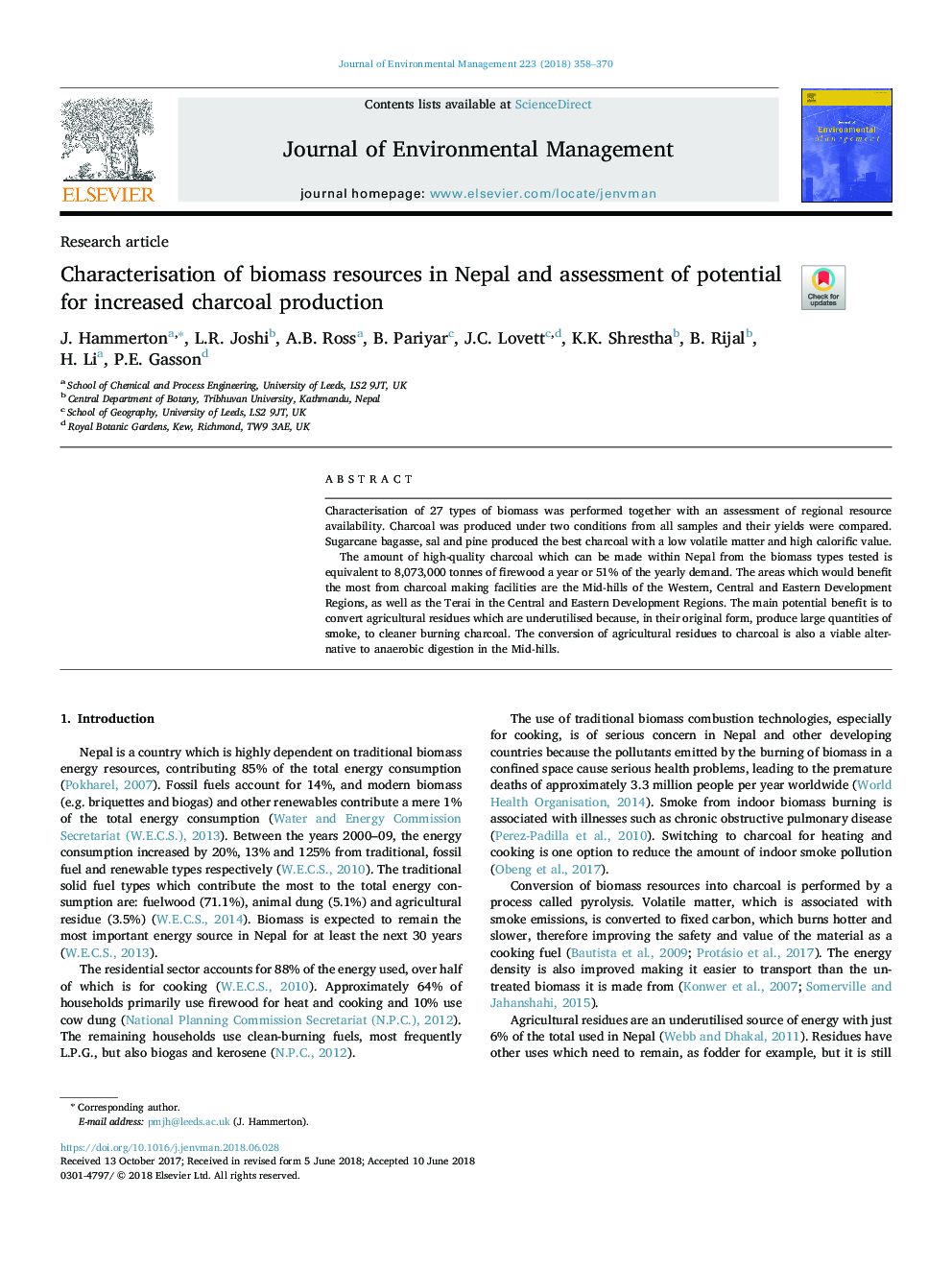| Article ID | Journal | Published Year | Pages | File Type |
|---|---|---|---|---|
| 7475876 | Journal of Environmental Management | 2018 | 13 Pages |
Abstract
The amount of high-quality charcoal which can be made within Nepal from the biomass types tested is equivalent to 8,073,000 tonnes of firewood a year or 51% of the yearly demand. The areas which would benefit the most from charcoal making facilities are the Mid-hills of the Western, Central and Eastern Development Regions, as well as the Terai in the Central and Eastern Development Regions. The main potential benefit is to convert agricultural residues which are underutilised because, in their original form, produce large quantities of smoke, to cleaner burning charcoal. The conversion of agricultural residues to charcoal is also a viable alternative to anaerobic digestion in the Mid-hills.
Related Topics
Physical Sciences and Engineering
Energy
Renewable Energy, Sustainability and the Environment
Authors
J. Hammerton, L.R. Joshi, A.B. Ross, B. Pariyar, J.C. Lovett, K.K. Shrestha, B. Rijal, H. Li, P.E. Gasson,
